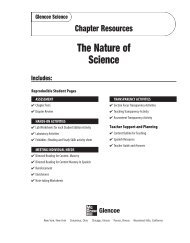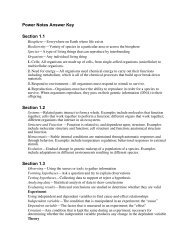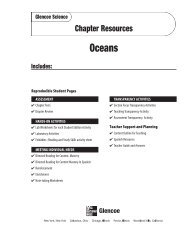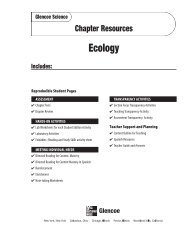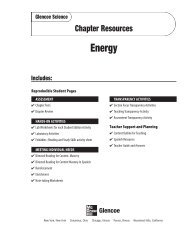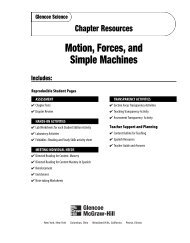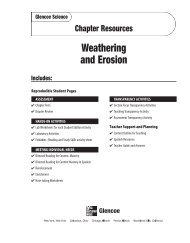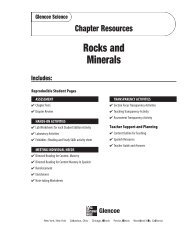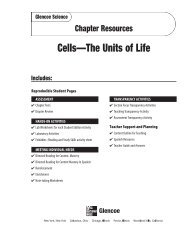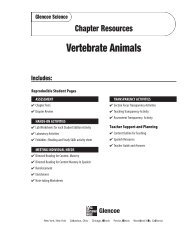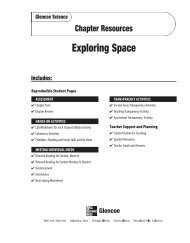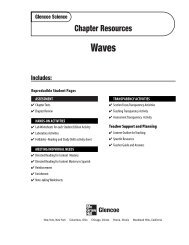Content Outline for Teaching - Potosi School District - Home
Content Outline for Teaching - Potosi School District - Home
Content Outline for Teaching - Potosi School District - Home
Create successful ePaper yourself
Turn your PDF publications into a flip-book with our unique Google optimized e-Paper software.
16<br />
Section 2<br />
<strong>Content</strong> <strong>Outline</strong><br />
<strong>for</strong> <strong>Teaching</strong><br />
The Different Jobs of Cells<br />
Cells—The Units of Life<br />
Underlined words and<br />
phrases are to be filled<br />
in by students on the<br />
Note-taking Worksheet.<br />
A. The cells in many-celled organisms are specialized in shape and size <strong>for</strong> their<br />
function.<br />
1. Human specialized cells include fat cells, bone cells, nerve cells, and muscle<br />
cells.<br />
a. Fat cells can store so much fat that the nucleus is pressed against the cell<br />
membrane.<br />
b. A hard calcium and phosphorus material surrounds bone cells.<br />
c. Nerve cells have many long branches to send and receive messages.<br />
d. Muscle cells have fibers that can contract and relax.<br />
2. Plant cells in leaves, stems, and roots are specialized to move food and water<br />
or to support the plant.<br />
B. Cells are organized so they can work together to keep the organism alive.<br />
1. Tissues are groups of similar cells that do the same kind of work; two or more<br />
tissues that work together <strong>for</strong>m an organ<br />
2. Groups of organs that work together to per<strong>for</strong>m a job are called organ systems.<br />
Discussion Question<br />
In what two general ways are cells specialized according to their function? size and shape<br />
Cells—The Units of Life 52




